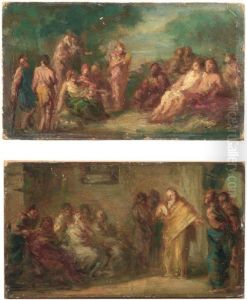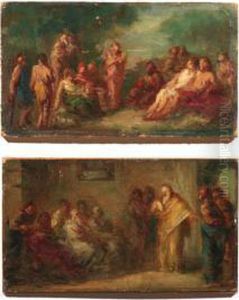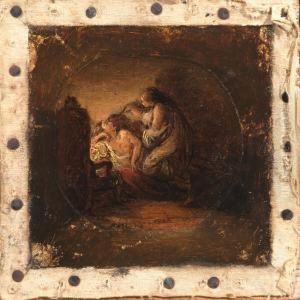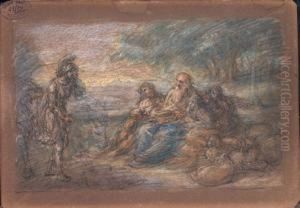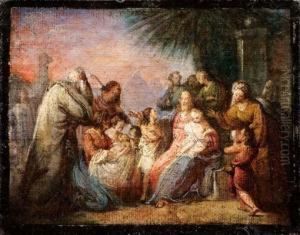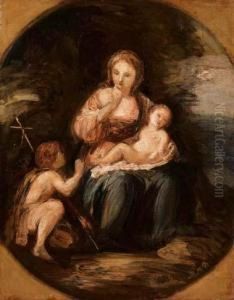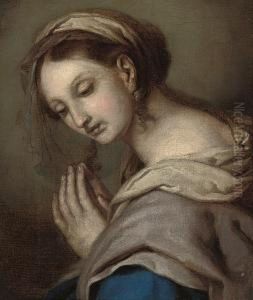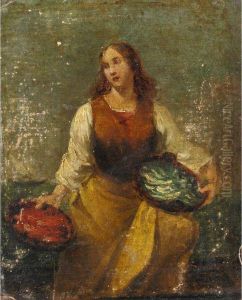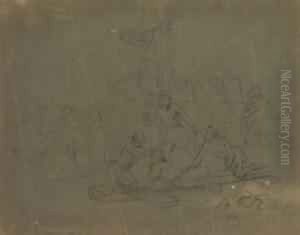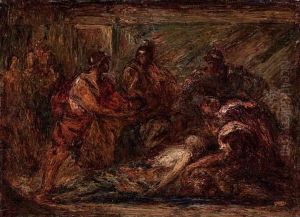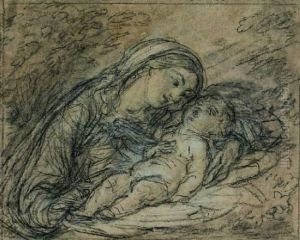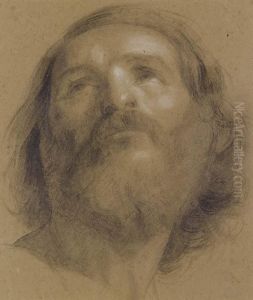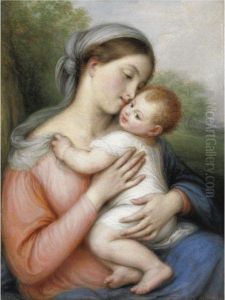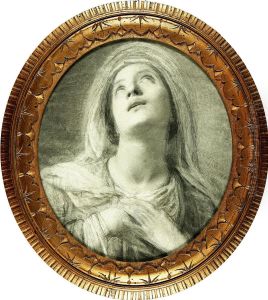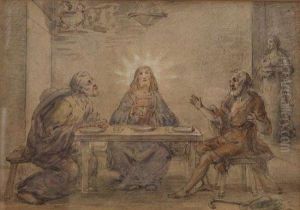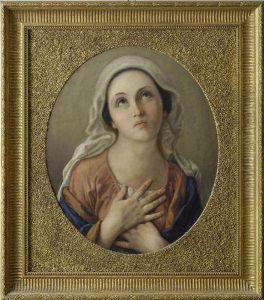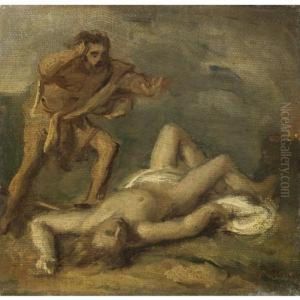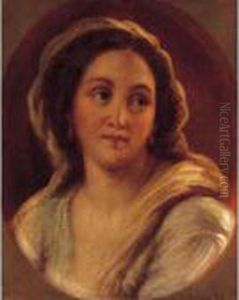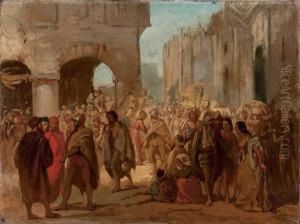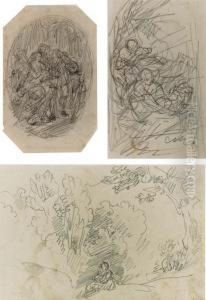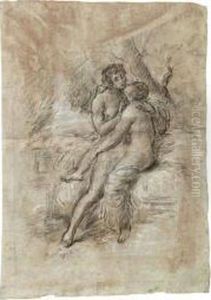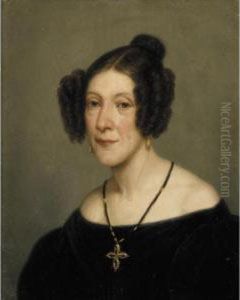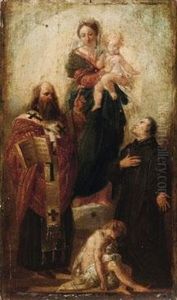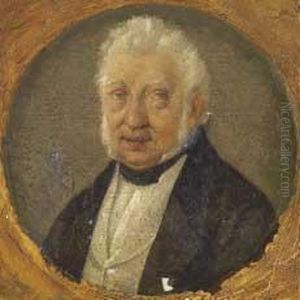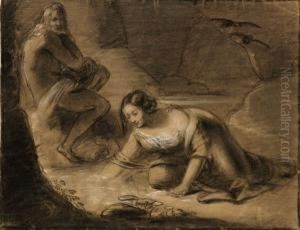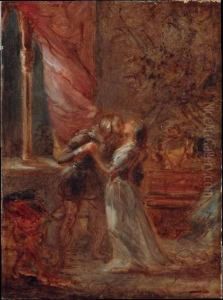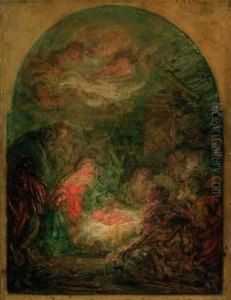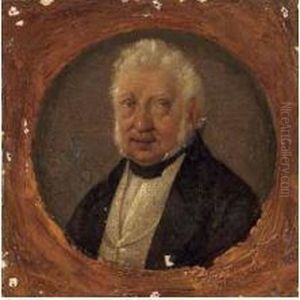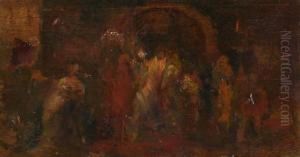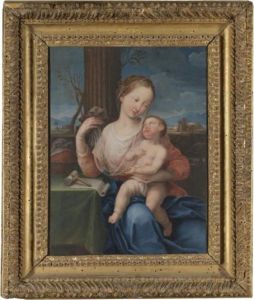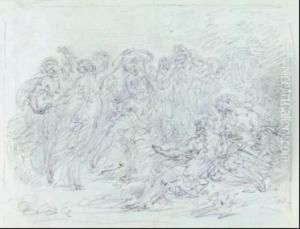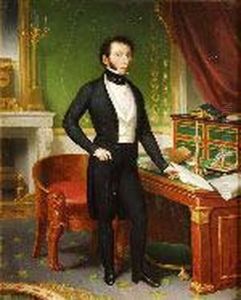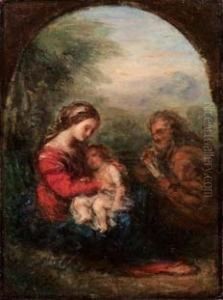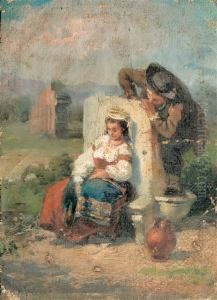Giovanni Carnovali Il Piccio Paintings
Giovanni Carnovali, better known as Il Piccio, was an Italian painter born on July 15, 1804, in Montegrino Valtravaglia, a small village in the province of Varese, Lombardy. He was a prominent figure in the Italian Romantic movement and was known for his distinctive style, which was characterized by expressive brushwork and a focus on light and color, distinguishing him from his contemporaries who often emphasized line and draftsmanship.
Carnovali displayed an early talent for art and began his studies at the Accademia Carrara in Bergamo when he was just a teenager. He was a student of Giuseppe Diotti, who was a notable influence on his early work. However, Carnovali soon developed his own style, which diverged from the neoclassical tendencies of his teacher and leaned towards Romanticism. His early works are marked by a certain boldness in the use of color and a tendency to capture immediacy in his subjects.
Throughout his career, Carnovali was somewhat of a nomadic artist, traveling extensively and living in various Italian cities including Rome, Florence, and Milan. This lifestyle allowed him to absorb diverse influences, which he incorporated into his work. Despite his movement, he maintained a strong connection to Bergamo, where he regularly returned and where many of his works are still preserved today in the Accademia Carrara.
One of Carnovali's most remarkable contributions to the art world was his ability to portray subjects with a profound sense of humanity and emotional depth. He often painted portraits, religious subjects, and scenes of contemporary life with a candidness that was ahead of his time. His portraits, in particular, show a psychological insight that makes them stand out from the more formal and idealized depictions of the era.
Carnovali's work was appreciated during his lifetime, and he received commissions from notable patrons. However, he never achieved the level of fame of some of his contemporaries. His unique style was sometimes at odds with the prevailing tastes of the period, which could explain why he remained relatively underappreciated until the 20th century when art historians began to re-evaluate his contribution to 19th-century Italian art.
Giovanni Carnovali died on June 1, 1873, in Seriate, near Bergamo. Today, his work is recognized for its innovative qualities and is studied for its contribution to the Romantic movement in Italy. His paintings can be found in various Italian museums and galleries, as well as in private collections. In particular, his dynamic brushwork and vibrant palette continue to be celebrated for their forward-looking qualities that hint at the developments of modern painting.
